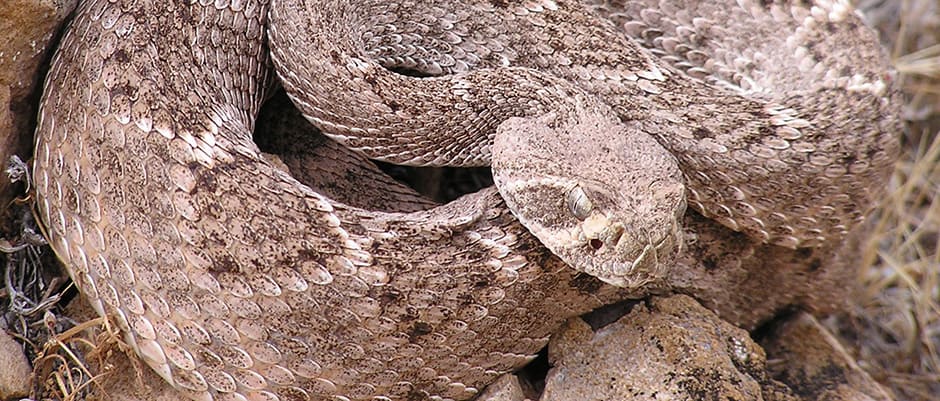Share this article
TWS Member Tracks Snakes Around Bird Baths
Removing bird baths and other features where prey congregate has no effect on nuisance rattlesnakes turning up around homes, according to a recent study.
“We wanted to try something else to see if we could prevent nuisance rattlesnakes from turning up in these areas,” said Erika Nowak, an associate research professor at the Northern Arizona University and lead author of a study recently published in the Journal of Wildlife Management.
Nowak, a member of The Wildlife Society, and her colleagues focused their study on Western diamondback rattlesnakes (Crotalus atrox) — a migratory species typically found in the southwest United States and north Mexico. The researchers identified patterns that the snakes followed in two national monuments in Arizona, and noted where they crossed through watering stations used by mice, birds, rabbits and other animals snakes prey on.
As part of the study, researchers used Sherman traps, pellet and scat counts, and point counting to determine what kinds of animals were attracted to watering stations. They also set up videos around water stations and tracked snakes fitted with radio telemetry devices.
“We knew from other research that if you provided food to [the rattlesnakes], you could get them to change their habits,” Nowak said. “We thought that the rattlesnakes would start congregating around these feeding stations.”
Unfortunately that didn’t work. “Very few of the rattlesnakes responded to these feeding stations,” she said, although she acknowledged that the outcome could be different if they focused on different species of snakes and different prey.
While Nowak’s study didn’t prove the researchers’ initial hypothesis, she said that there should be more studies that look at the wider effects of supplemental feeding as this study is “on the advance wave of understanding” of the indirect effects supplemental feeding and watering has on reptiles.
Her team’s study was only conducted over two year and though they didn’t find any behavior changes, there is evidence the western diamondbacks can live for up to 25 years and don’t feed very often, so they could be slow in changing their habits.
“They’re not keyed into responding quickly to changes in their diet and food because they don’t need to.”
It might also point out a problem with the way that we understand the snakes. While some initially believed that the snakes could be attracted to bird baths or feeders set up by humans, it may just be coincidence that brings the snakes through these areas. They tend to follow the same migration patterns for generations, regardless of whether humans decide to move into areas.
“Rattlesnakes are very, very social, it turns out,” Nowak said, adding that they use scent cues to follow each other and to follow prey. “They could be following trails they followed for eons and eons”
They may also be attracted to areas with humans due to other factors like the cover and relative humidity these areas provide. A bird bath set up to attract their prey nearby would just be an added benefit in this case.
Nowak said that the important message here is that data doesn’t live up to the “outsized fears” humans have of these snakes. “One of the take home messages for conservation is that we need to think about our perception of these animals.”
Header Image:
A new study conducted by a member of TWS shows that rattlesnakes shows that western diamondback rattlesnakes may not congregate around bird feeders or similar landscape features in search of prey.
Image Credit: Erika Nowak








